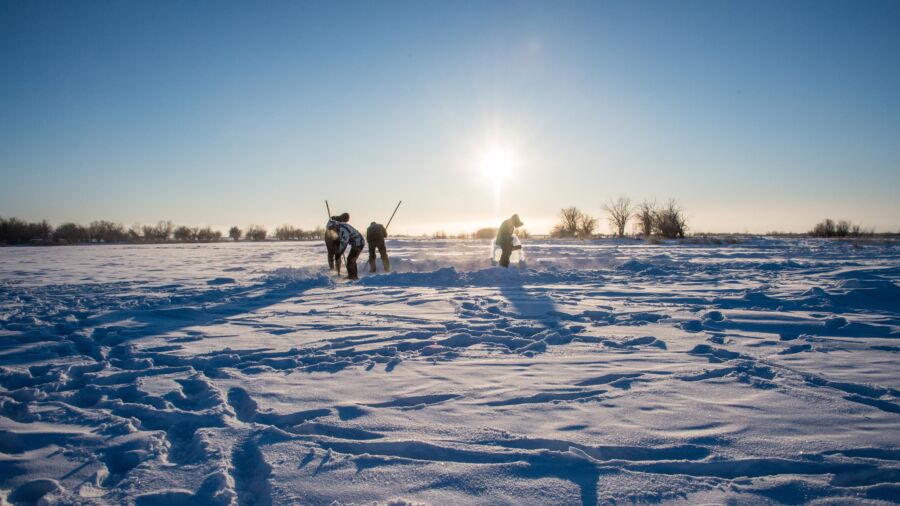Scientists have managed to revive roundworms that have been frozen for 46,000 years in Siberian permafrost some 40 meters underground, according to a new study published in PLOS Genetics on July 27.
The worms stayed alive through cryptobiosis in a state of suspended metabolism, according to Teymuras Kurzchalia, a professor involved in the research who works at the Max Planck Institute of Molecular Cell Biology and Genetics in Dresden, Germany.
In cryptobiosis, all metabolic processes halt, rendering reproduction, development, and repair impossible, with the organism essentially being frozen in time. During cryptobiosis, organisms can survive in the absence of water or oxygen, as well as under extreme temperatures and in high-salinity environments.
“One can halt life and then start it from the beginning. This a major finding,” Mr. Kurzchalia told CNN.
Radiocarbon dating was used to determine the age of plant material found in the same layer as the specimens. Researchers identified the organisms as a previously undiscovered species of nematode, and assigned them the name Panagrolaimus kolymaensis after the Kolyma River near where the worms were found.
Researchers have discovered that the nematode reproduces asexually through parthenogenesis, in which a new worm develops from an unfertilized gamete, essentially producing offspring of identical genetic makeup to the parent. The scientists said they have raised over 100 generations in the lab.
The typical life span of the 46,000-year-old nematode species is a mere one to two months.
“We can say that they are alive, because they move, they eat bacteria on the culture plates, and they reproduce,” Philipp Schiffer, an evolutionary biologist at the University of Cologne in Germany, and one of the authors in the study, told the Washington Post.
The method for reviving the creatures was fairly simple, and involved the soil thawing under temperature regulation, so that the samples were not cooked. The worms then began wriggling and reproducing while eating bacteria on a petri dish.
However, some scientists have expressed their skepticism that the roundworms could have actually withstood tens of thousands of years in the permafrost without dying.
“I would love to believe that the animals they are describing have survived being frozen for 40,000 years in permafrost,” Byron Adams, a biologist at Brigham Young University, told Scientific American. “And if I were a betting man, I would bet that it could actually happen, and these things really are this old.”
However, the study only establishes the age of the plant material around the worms, and not the worms themselves, he said. “I don’t doubt the age of the organic material in the permafrost,” Mr. Adams said. “Those values are likely legit.”
But Mr. Adams said that “the authors haven’t done the work to show that the animals they have recovered are not simply surface contaminants.”
Prior to this, the oldest roundworm to be resurrected from cryptobiosis had been dried up for 39 years on a preserved plant sample. Another one spent over 25 years frozen on moss in the Antarctic.
The tone of the paper was confident, however. “This [discovery] raises the question of whether there is an upper limit to the length of time an individual can remain in the cryptobiotic state,” the study suggested.


